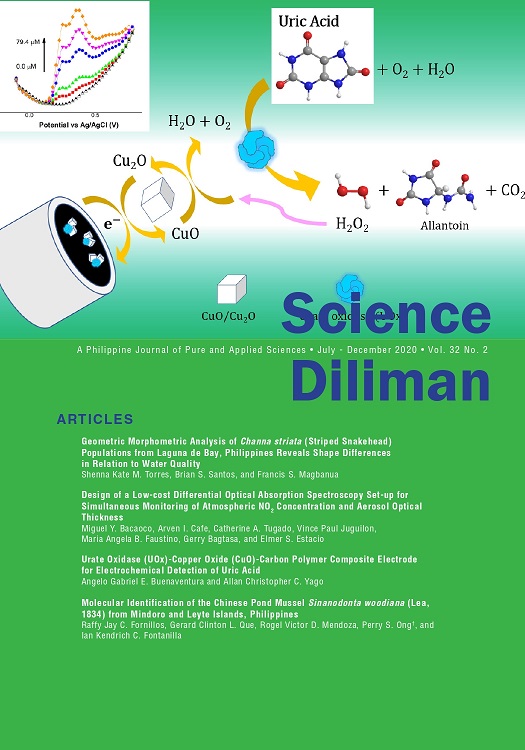Urate Oxidase (UOx)-Copper Oxide (CuO)-Carbon Polymer Composite Electrode for Electrochemical Detection of Uric Acid
Abstract
This study presents an electrochemical biosensor developed for uric acid (UA) determination using carbon paste electrode (CPE) modified with copper (II) oxide (CuO) particles and urate oxidase (UOx) enzyme. Base CPE is prepared using a multi-walled carbon nanotube (MWCNT) and a polydimethylsiloxane (PDMS) binder. The main sensing process is based on the oxidation of UA into 5-hydroxyisourate (HIU) as catalyzed by UOx, forming H2O2 as byproduct, and then the H2O2 reduction-oxidation (redox) reaction converts CuO to form Cu2 O; the amount of H2O2 and hence UA in the sample is measured by the oxidative current measured for the conversion of Cu2 O back to CuO. Cyclic Voltammetry (CV) measurements revealed that the activity of UOx was retained with an apparent Michaelis constant (Kmapp) to be equal to 41.46 µM. Differential Pulse Voltammetry (DPV) measurements of UA using UOx-CuO-CPE showed a linear response ranging from 10 µM to 79.4 µM UA with a limit of detection (LOD) determined to be equal to 8.82 µM. UOx-CuO-CPE was shown to be selective towards UA even in the presence of creatinine, xanthine, and glucose. Furthermore, UOx-CuO-CPE was shown to be reusable (3.28% RSD), and its fabrication is repeatable using single factor Analysis of Variance (ANOVA) [F(1.396) < Fcritical(5.143)]. UOx-CuO-CPE was also shown to be stable even after five weeks of storage using the two-sample t-test [t(0.156) < tcritical(4.303)]. Based on a recovery test using synthetic urine sample, this study showed the applicability of UOx-CuO-CPE in the detection of UA in human urine with 90.27%–102.03% recovery (n = 3).



